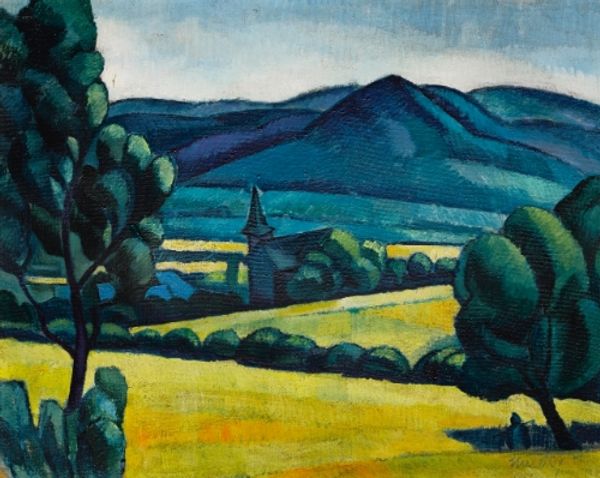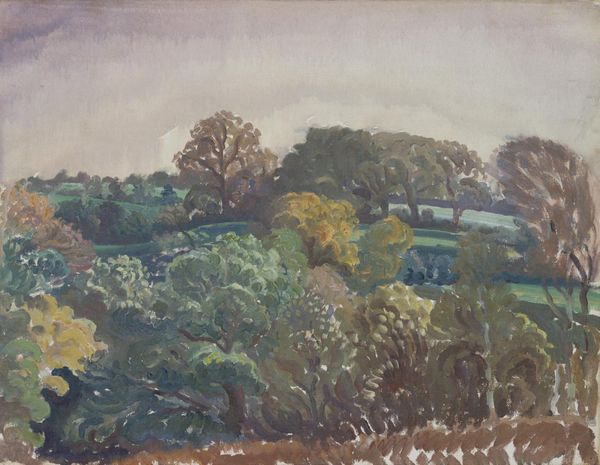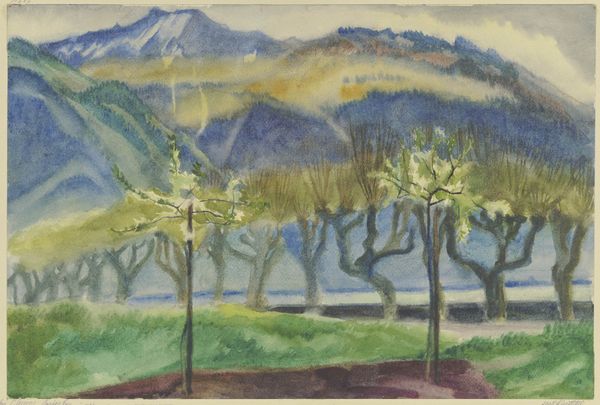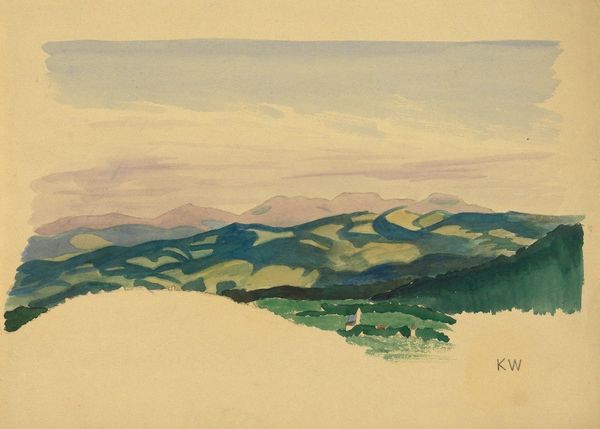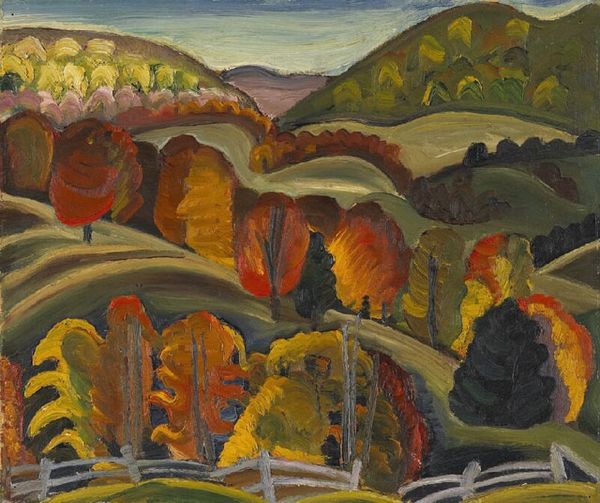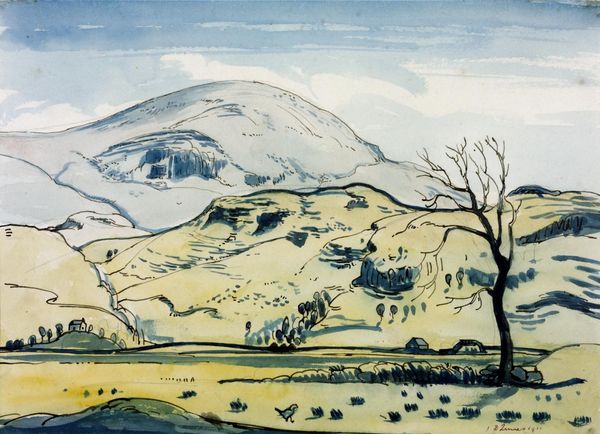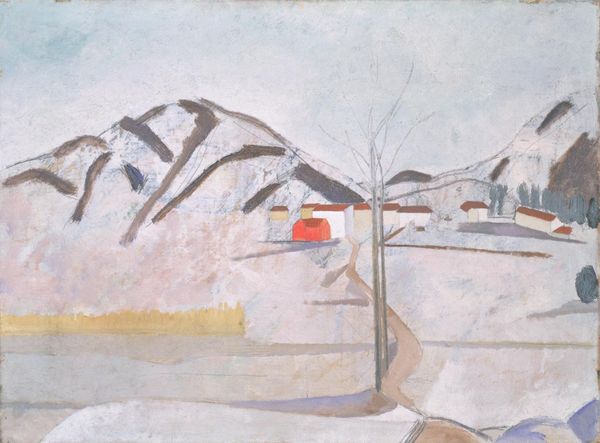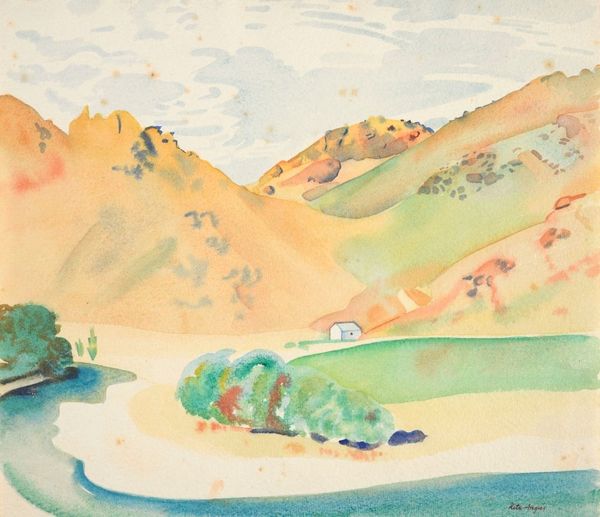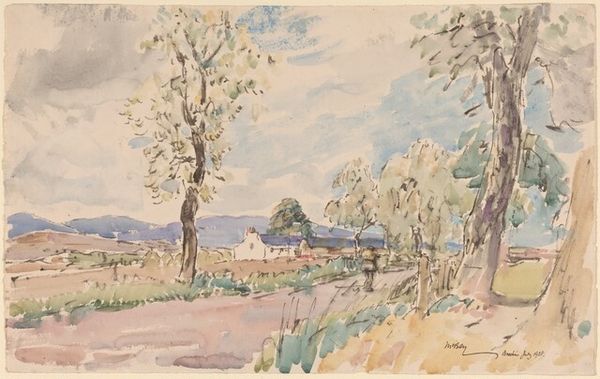
Dimensions: 44 x 63.4 cm
Copyright: Pyotr Konchalovsky,Fair Use
Editor: So, this is "Kutaisi. Rionges" by Pyotr Konchalovsky, painted in 1935, and rendered in watercolor. It feels a bit melancholic to me. The colors are muted, and the bare trees seem to reach out like grasping hands. How do you interpret this work, with its almost skeletal trees dominating the landscape? Curator: I see echoes of cultural memory embedded in those trees. Consider the tree as a primal symbol: it represents life, death, and rebirth across many cultures. Notice how Konchalovsky’s trees, though bare, possess a stark, undeniable presence. Does their positioning – almost like gatekeepers to the distant hills – evoke a sense of passage or perhaps, a spiritual threshold? Editor: A spiritual threshold, that’s interesting. I hadn’t considered that. I was so focused on the bareness representing a kind of desolate feeling. But you're right, there's something undeniably powerful about them. Curator: The landscape tradition often uses framing devices. Here, the trees aren't merely compositional elements; they actively engage with the hills beyond, suggesting an interconnectedness. Does the color palette also convey particular emotions? Are those the colors of grief or acceptance? How might a Russian audience in 1935 interpret this landscape differently than we do today? Editor: Thinking about the cultural and historical context is making me rethink my initial reaction. Maybe it's not just melancholic, but resilient. Maybe these trees witnessed something and they now carry a story that deserves recognition. Curator: Exactly! And in art, nothing is truly isolated. Konchalovsky builds upon layers of symbolic meaning, asking us to decipher not just what we see, but what we feel and what we remember when confronted with such a powerful image. Editor: Thanks, that perspective has definitely deepened my appreciation of the painting! Curator: Indeed. Discovering hidden symbolism opens new paths to understand collective and personal emotions through art.
Comments
No comments
Be the first to comment and join the conversation on the ultimate creative platform.
